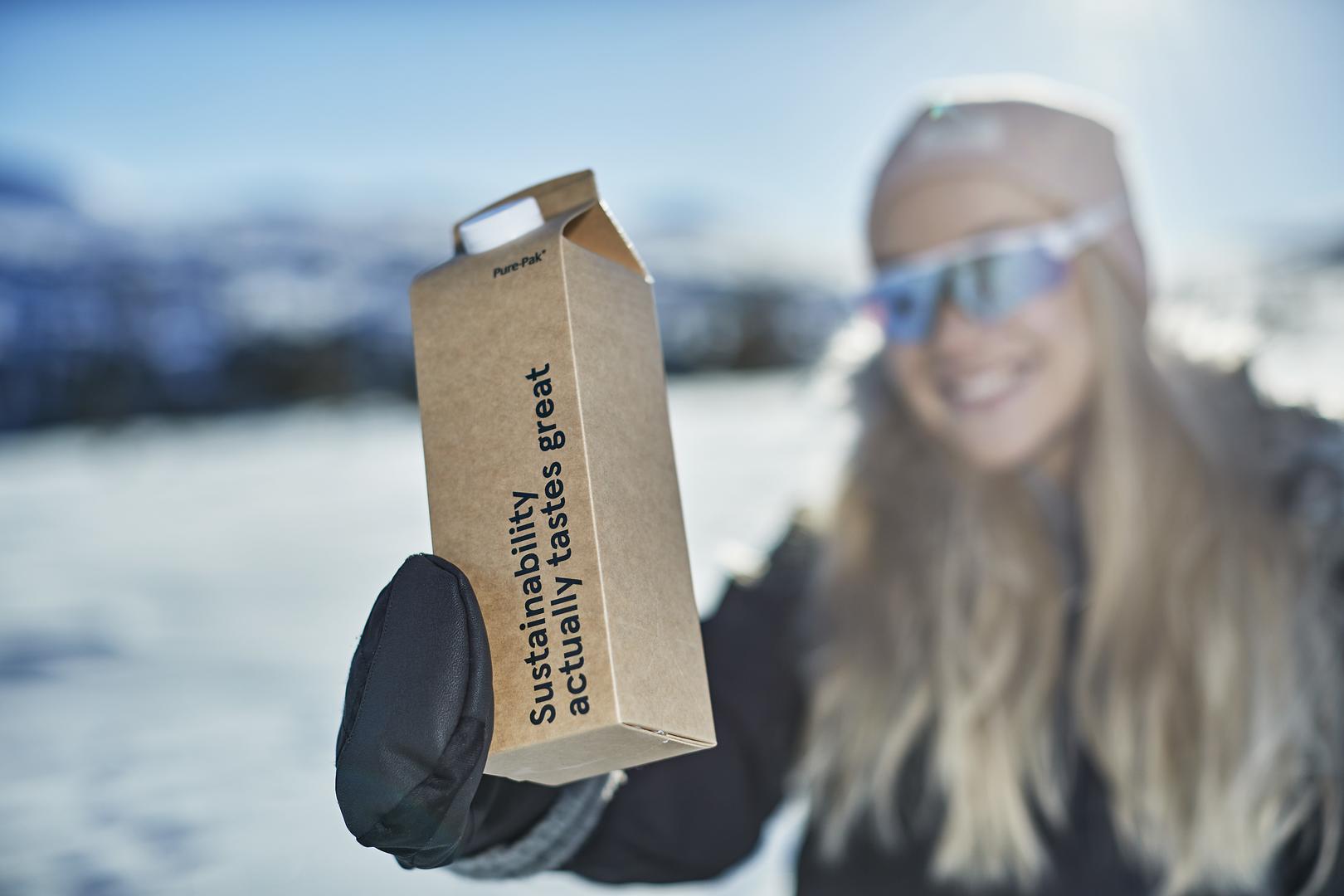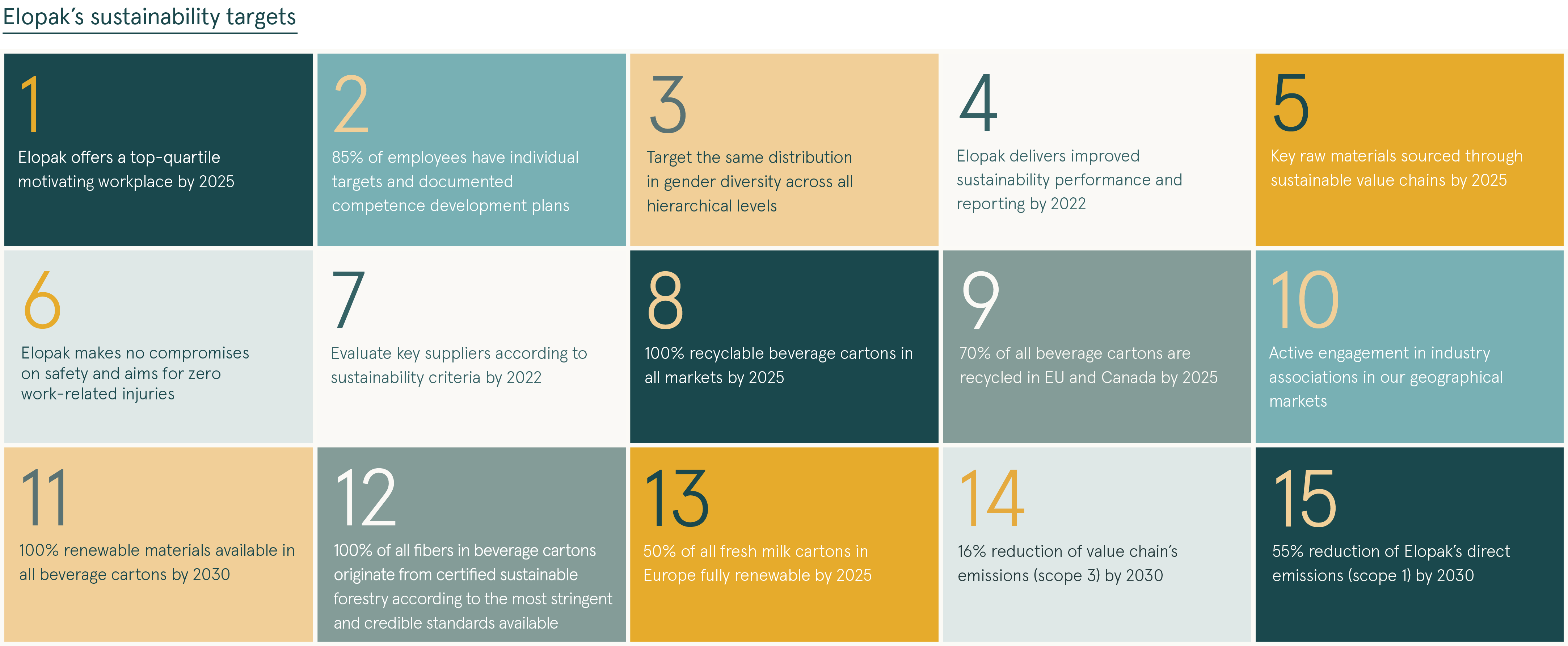The way we work
Being sustainable means finding the balance between what is good for the people, the planet and the profit.
Taking care of people in terms of employment, health and safety, and ethical and social considerations, not only within the company but throughout the value chain.
Protecting the natural resources of our planet by sourcing renewable raw materials through sustainable supply chains, by continuously reducing and neutralizing greenhouse gas emissions, and by ensuring recycling of materials.
Ensuring long term financial viability and contributing to the society by creating interesting and safe jobs and helping our customers to offer safe and healthy foods.
Elopak works in accordance with the UN Sustainable Development Goals. The 17 goals with a total of 169 targets are a universal call to action to end poverty, protect the planet and ensure that all people enjoy peace and prosperity. This goes hand-in-hand with Elopak’s global approach to sustainability.

Goal 8: Decent work and economic growth
We create work for many people in our business and supply chain. Historically, we have had a strong focus on labour and ethical practices in our company. We now further increase this focus throughout our supply chain, as well as building skills and employability of our employees.

Goal 12: Responsible consumption and production
We are dependent on renewable natural resources, and the way we source fibre is a great opportunity for Elopak to contribute to sustainable forests. We have targets for sourcing certified raw materials and helping improve recycling in all steps of our value chain.

Goal 13: Climate action
We take urgent action to combat climate change and its impact. Elopak is fully aware of the responsibility we have in the global increase of greenhouse gas emissions. We work to reduce our emissions from our operations and supply chain. With ambitious Science Based Targets in place, we commit to further reduce our impact.

Goal 17: Partnerships for the goals
We cannot achieve the SDGs working alone, and we have been working with suppliers and customers to reduce emissions and use of raw materials. Strong international cooperation is needed now more than ever to ensure that countries have the means to recover from the pandemic, come back stronger and achieve the SDGs.

Our strategy
Sustainability remains a core element in Elopak’s business and our sustainability program is an embedded part of our group strategy. We work closely with key stakeholders to ensure our strategy is in line with the most recent priorities surrounding us. Our sustainability targets remain the same as last year, safeguarding our long-term commitments to key global challenges such as climate change, scarce natural resources, diversity, safety and responsibility in supply chains.

Material topics
Materiality is the process used to identify priority topics for a company – the issues that matters. It is key in order to define and prioritise future focus areas. Elopak’s materiality analysis is frequently updated, as the world around us is changing, as are the expectations of our stakeholders.
Our customers, colleagues and other partnering organizations expect rapid action on a wide range of social and environmental issues, which create great opportunities for Elopak to deliver and grow. Our stakeholder dialogue is based on respect for individuals, society and the environment. We keep a close dialogue with them to understand their priorities, as well as the role we play in society.

Our material topics
Based on the materiality analysis and our stakeholder engagement, Elopak has defined our material issues to be the following: Environmental Impact, Circular Economy and Responsibility. This report is structured around these identified material topics, and each of them are further described throughout the report. Our sustainability performance indicators are either self-defined or structured in line with relevant indicators from the GRI Framework. Read more here.
|
Environmental impact |
Circular Economy |
Responsibility |
|
|
Material topic |
|
|
|
Stakeholder engagement
Our stakeholder engagement includes frequent contact with key identified stakeholders and Elopak has focused on qualitative interviews rather than quantitative data. The table below shows the approach Elopak has taken towards stakeholder the past years. In 2020, stakeholder interviews were done by a neutral third party.
|
Key stakeholder groups |
How we interact |
Key topics and concerns |
How we respond |
|
Customers/retailers |
|
|
|
|
Suppliers |
|
|
|
|
Owners |
|
|
|
|
Financial institutions |
|
|
|
|
Employees |
|
|
|
|
Government/regulators |
|
|
|
|
NGOs and associations* |
|
|
|
|
Local communities around our main sites |
|
|
|
